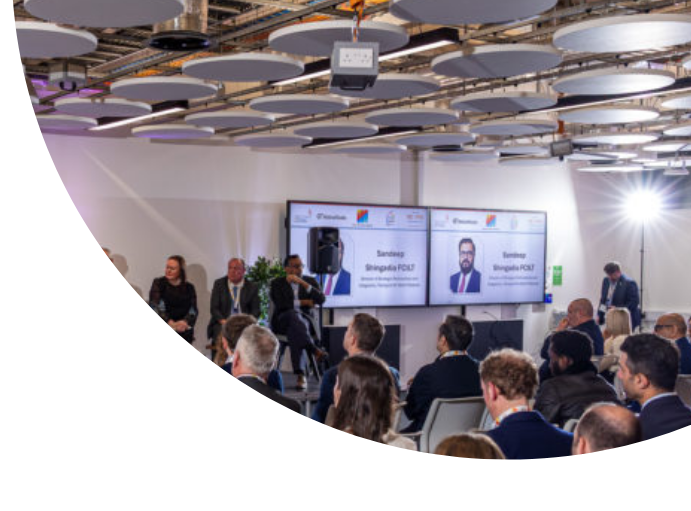This article aims to highlight the severe economic and operational consequences of modern cyberattacks—using the £1.9 billion JLR incident as a case study—and to urge industry leaders to shift from passive, compliance-driven security to proactive, holistic cyber resilience.
Drawing on over 25 years of experience across organisations such as the European Space Agency, HP, Qatar Foundation, and the UK Government, Chris Woods (Founder & CEO, CyberQ Group) sets out to demonstrate how vulnerabilities across IT, OT, IoT, supply chains, and human behaviour create systemic risk, and argues for a more intelligent, adaptive, and independently assured approach to cybersecurity. Written by a senior cybersecurity practitioner with global experience, the piece is designed for business leaders, policymakers, and organisations seeking to strengthen their operational resilience in an increasingly connected world.
(November 2025)
The estimated £1.9 billion cost of the recent cyberattack on a cornerstone UK automotive manufacturer sends a message far louder than any industry report: in the digital economy, cybersecurity is no longer a technical expenditure; it is a critical component of national and corporate stability. This incident, which paralysed production for over five weeks and sent shockwaves through the supply chains of over 5,000 UK businesses, should serve as the definitive wake-up call. We must stop viewing cyber resilience as a passive defence and start treating it as an active, outcome-driven business strategy.
The Fragility of the Connected World
The automotive industry, with its complex logistics, reliance on Operational Technology (OT) for manufacturing, and global supply networks, represents the new frontier of risk. When a major industrial player’s systems are crippled, the effect cascades instantly: jobs are at risk, supply chain partners face devastating financial losses, and trust in the entire ecosystem is damaged.
My experience, stemming from over 25 years in the field—including roles with the European Space Agency, HP, Qatar Foundation and UK Government—has taught me that everything is connected. The risk is often introduced by the most unassuming connections.
We saw this principle demonstrated in a recent engagement with a global enterprise, where we used our Smart Building Cyber Assurance (SBCA) service. The objective was to test the hidden, soft targets in their physical environment. The initial breach wasn’t via a server or firewall, but through a common Internet of Things (IoT) device: a smart appliance. By exploiting that single IoT vulnerability, we moved laterally across the network, gaining access to record a highly sensitive board meeting via an integrated device.
This case, which we see replicated time and again across various sectors, is a tangible example of the JLR attack vector: a failure to secure the entire attack surface—from the shop floor OT to the most sensitive IT systems—creates a catastrophic pivot point for attackers.
The Three Critical Lessons We Must Act On
The industry has drawn key lessons from the JLR incident, but I believes we need to move from observation to algorithmic execution:
- Operational Resilience over Compliance
Compliance is necessary, but it is not resilience. The UK’s upcoming Cyber Security and Resilience Bill (CSRB), which will strengthen the existing NIS Regulations, mandates greater resilience for essential services. But organisations cannot afford to wait for legislation; they must shift their security focus to proactive threat neutralisation.
- Mastering Third-Party and Supply Chain Risk
The £1.9 billion disruption proves that an organisation is only as strong as its weakest supplier. Attackers deliberately target the lower-security links in the supply chain to gain access to the main enterprise.
- Human Resilience and Culture
Cybercriminals often prey on human vulnerability. As our services have shown clients worldwide (operating across the UK, USA, and Asia), the risk is often misunderstood until it is too late. The solution involves continuous, practical training that transcends simple compliance.
This is why we focus on stress testing systems and developing talent. We work with clients to develop effective Incident Response plans, running simulations that test not just the technology, but the speed and decision-making of executive teams under pressure.
- Monitoring Your Environment
The devastating fallout from the JLR cyberattack—which crippled production and hit the supply chain—serves as the ultimate proof that continuous, intelligent monitoring is mandatory. Businesses must transition from simple perimeter defense to Managed Security Operations Centre (SOC) or Extended Detection and Response (XDR) monitoring.
Relying on traditional security is no longer adequate; the attack demonstrated that threats quickly pivot from one compromised asset to the whole network. Using a modern SOC/XDR solution ensures 24/7 continuous surveillance and leverages AI and machine learning to cut through the noise, providing real-time visibility and rapid response capability required to contain a major attack before it becomes a multi-billion-pound crisis
Moving Forward with Confidence
The JLR attack is a painful lesson, but it is also an opportunity. It is a chance for industry leaders to adopt an adaptive, AI-driven security model that delivers measurable business value—protecting not just data, but jobs, supply chains, and reputation.
cybersecurity is now synonymous with operational viability. My position is to deliver the resilient security posture that allows global industry, particularly manufacturing and critical national infrastructure, to protect its financial stability and safeguard its future.
Lessons from the JLR Attack
- Prioritise Supply Chain Security: The attack’s major impact on over 5,000 downstream UK businesses proved that your security is only as strong as your weakest vendor. Businesses must establish robust cybersecurity protocols and contingency plans that extend to all critical partners.
- Strengthen Identity and Access Management: Cybercriminals often exploit weak or legacy accounts and missing multi-factor authentication to gain access and move laterally. Enforce multi-factor authentication everywhere and remove all unused or stale accounts.
- Plan for Quick, Decisive Action (Incident Response): JLR’s decision to immediately shut down systems likely prevented further compromise. This emphasises the need to have a pre-rehearsed Incident Response (IR) plan so leadership knows who makes the “shut it down” call under pressure.
- Invest in Recovery Capabilities: Downtime was prolonged and costly, underscoring the need to regularly test recovery plans and ensure verified, clean backups exist. This significantly reduces downtime and mitigates financial losses.
- Embed Cybersecurity into Governance: The financial and operational scale of the breach demands that boards treat cyber risk with the same seriousness as financial risk, making it a core operational strategy, not just an IT concern.
- Beware of OT/IoT Vulnerabilities: The incident highlights the operational fragility where IT systems connect to manufacturing and OT systems, meaning security standards must be extended beyond the traditional IT network.
- Avoid “Marking Your Own Homework”: Relying solely on internal IT or general outsourced IT to manage and validate cybersecurity creates a conflict of interest. Security assurance should be conducted by independent, pure-play cyber firms that provide objective scrutiny and “positive friction”.
This is a personal blog post. Any opinions, findings, and conclusion or recommendations expressed in this article are those of the authors and do not necessarily reflect the view of the Centre for the New Midlands or any of our associated organisations/individuals.
ABOUT OUR AUTHOR:
Chris Woods is the award-winning Founder and CEO of CyberQ Group, a leading global cybersecurity firm with headquarters in the UK and operations in the USA and the Philippines.
He has received numerous awards for his leadership and innovative contributions, including Tech Leader of the Year at Birmingham Tech Week in 2024 and Wolverhampton University’s Professional Excellence Award in 2022. He was also a Midlands finalist for both the KPMG and EY Entrepreneur of the Year awards in 2021 and 2022. In 2025, his work was further recognized with the Signature Awards for Excellence in Innovation and the Business Desk Company Leader award in the 51-100 employee category.
Beyond his professional achievements, he is a Guardian at the Birmingham Assay Office and a dedicated Acorns Hospice Ambassador, actively supporting their fundraising efforts.
Contact details:
Mobile: +44 (0)7427 925 918
Email: chris@cyberqgroup.com
Web: www.cyberqgroup.com
LinkedIN: https://www.linkedin.com/in/mrwoods/
Linktr.ee: https://linktr.ee/ChrisWoodsQ







